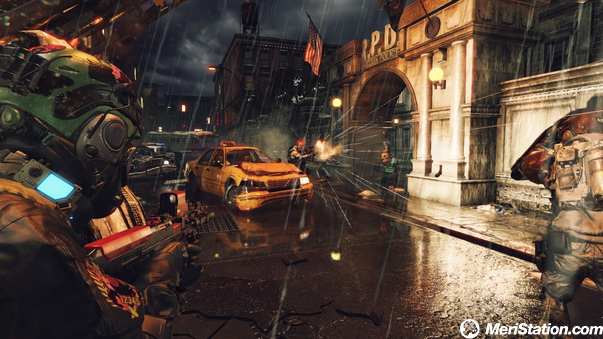Usually video games in which the zombie is the main problem with which the player is found have had a protagonist: the weapon. The Madrid studio Tequila Works gave a twist to the genre when it launched in the summer of 2012 Deadlight on
Xbox Live Arcade (with a PC version months later), a mixture of platforms and puzzle, taking it out of the genres that starred the dead living (survival horror or shooter)
and separating from the center of the script the monster created by George A. Romero to put in its place the effects of the undead in the world and how these have affected the character that the player incarnates, Randall Wayne .
The work of Tequila is more comparable with big names in cinema, literature or comics than with videogames of the genre that have appeared over time. It has a lot of La Carretera, from The Walking Dead, from Stephen King’s Cell. Also, of course, with
The Last of Us (which came out after Deadlight). The proposal of the Madrid study is not to increase the score of eliminated zombies but to explore the feelings of Randall, to perceive what the day of the final judgment has caused to our world and how people have changed their criteria before what is good and what It is evil.
The story is told by Randall himself in the first person (although there are some sequences in which the plot is narrated through comic scenes), through his thoughts, where we realize that he is a character with psychological problems and whose objective in the four hours that the adventure lasts is none other than that of recovering his wife and daughter, who are in a Safe Point
protected from the horrors that exist in the roads and abandoned towns of the Canada of 1986 where it takes place Deadlight. We also know more about the protagonist thanks to his diary, from which we know his context and that we are expanding thanks to the pages that we find on the stage.
Precisely the stage is, along with Randall, the protagonist of Deadlight, because through its layers of depth we see stories. Although the action of the game takes place in
two dimensions, what is shown on the screen is three-dimensional. We see that traffic jam with burning cars on the road in the background. The ambulance stamped with an army of undead devouring “something”. The shop with barricades with graffiti warning of the danger in its facade. Or simply the destruction of
everything that a few weeks earlier in that same year 1986 were Canadian cities little different from the current ones. This depth of field (which gets really beautiful prints, in its own way) is also used in playable terms. For example, zombies that are not in our plane can come to our line of action if we make noise,
Running away from zombies and moving boxes is what we will do in Deadlight. Advance through the levels, jump platforms, dodge traps, solve puzzles and avoid being devoured. Remember (intentionally by Tequila Works) to classics like Prince of Persia or Another World. Although the main way to confront the zombies is to dodge them or lead them to traps (Randall can whistle to attract them),
sometimes we must use the ax to move them away from us for a few seconds, or the gun and the shotgun, which will end with them firing, as always, in the head, but whose ammunition is more than scarce and that will alert the “shadows”, putting us in a situation in which we are surrounded and there is no
escape. Apart from this, the odd section in which we will have to run at full speed while doing impossible jumps (and that we will have to overcome by trial and error, dying again and again) or avoid being seen by an enemy that is in another plane of depth . It is not much variety, but the proposal is stretched just enough to not tire in the four hours that Deadlight lasts.


